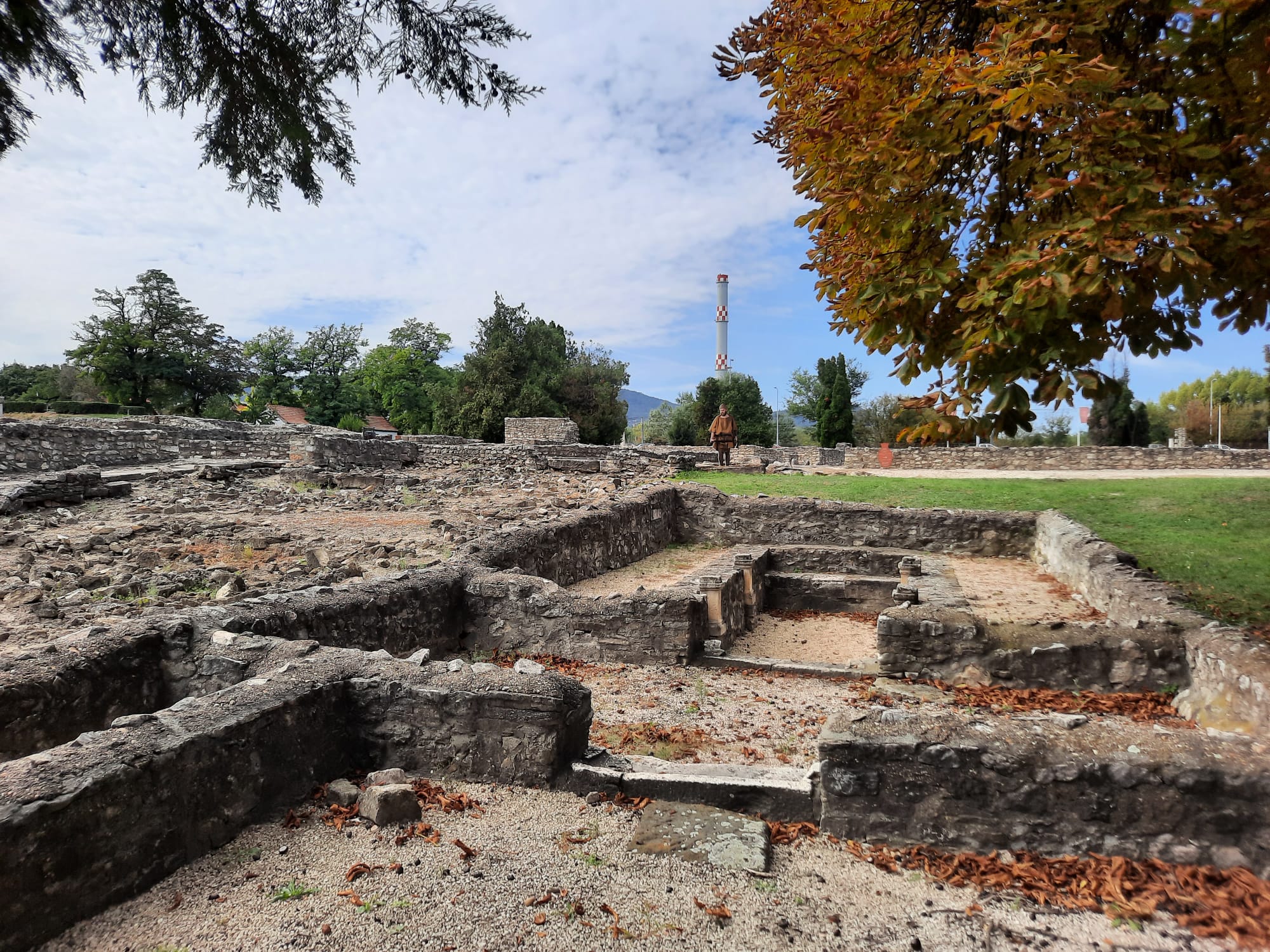Aquincumi Múzeum (Aquincum Museum), Budapest
This extensive archaeological site within easy reach of central Budapest tells the story of the city’s origins and early history. Great for a half day’s exploration.

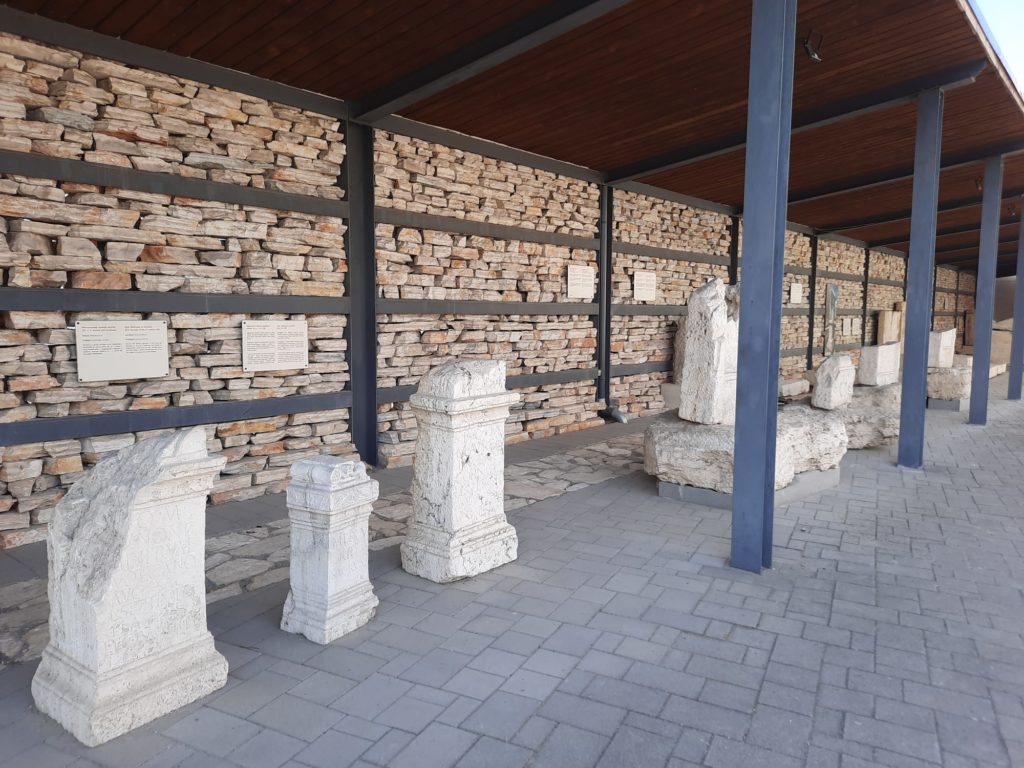
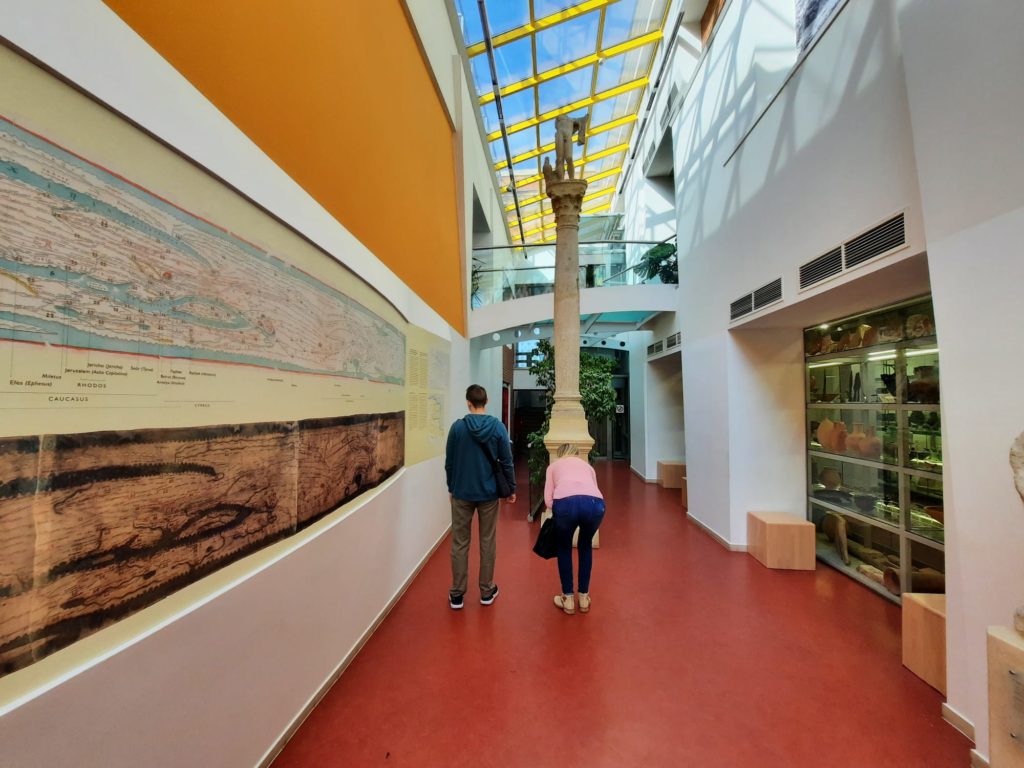
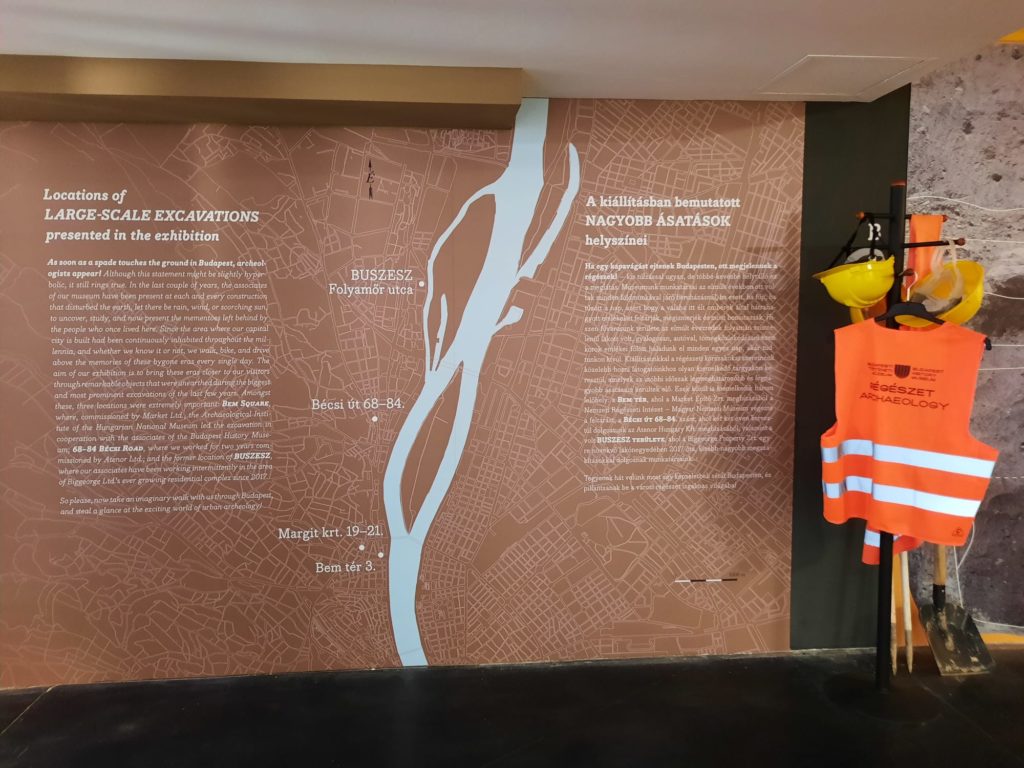

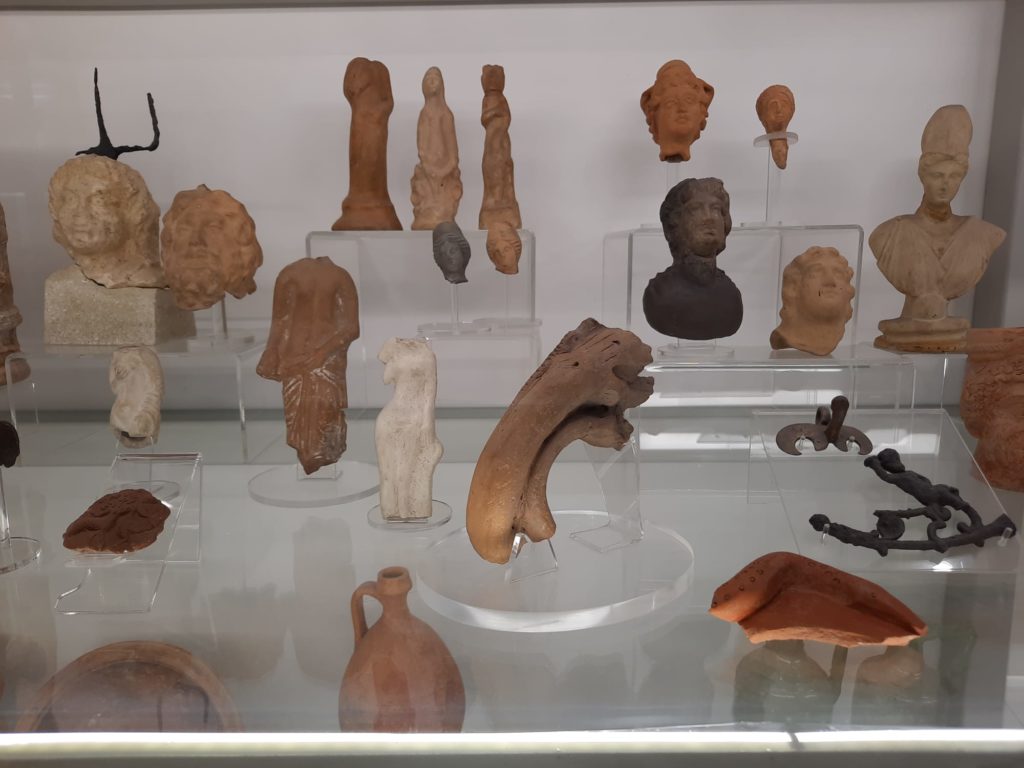
Aquincum: Óbuda’s Hidden Gem
On my recent long weekend in Budapest, I found there was more than enough in the city itself to satisfy my curiosity without any daytrips further afield. I enjoyed wandering the city streets, exploring its history and architecture, with the option of a soak in a thermal pool to relax afterwards. As an erstwhile historian, what interested me about the city was the unevenness of its layers. If you take somewhere like London or Paris, different centuries rub shoulders together wherever you look (even with the city’s Hausmannian transformation). In Budapest, on the other hand, the city feels overwhelmingly 19th Century. This is a little surprising in a city that has played host to, in no particular order, Romans, Austro-Hungarians, Mongols, Ottomans, Celts, Angevin kings and Communists.
After a couple of days of 19th Century boulevards, medievalist churches and so on, I decided to seek out some of the earlier layers. I had limited success finding evidence of the city’s Ottoman past (see more here). But the Romans, despite being so much older, were a little easier.
In fact, I only had to get a bus from my hotel to Óbuda, one of three settlements which came together to form Budapest in 1873 (the others, you won’t be surprised to learn, were Buda and Pest). So along with the Urban Geographer and the Salterton Arts Review’s mother, my companions for this long weekend, we struck out to Aquincum to find out more about what like was like around here in the Roman period.
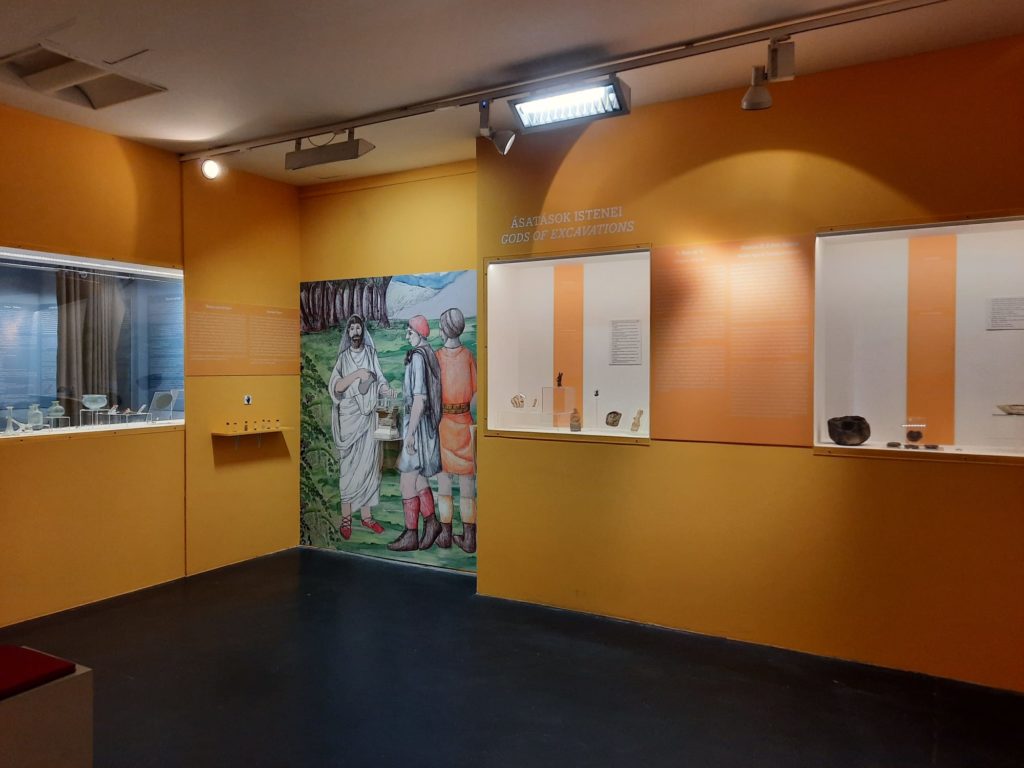
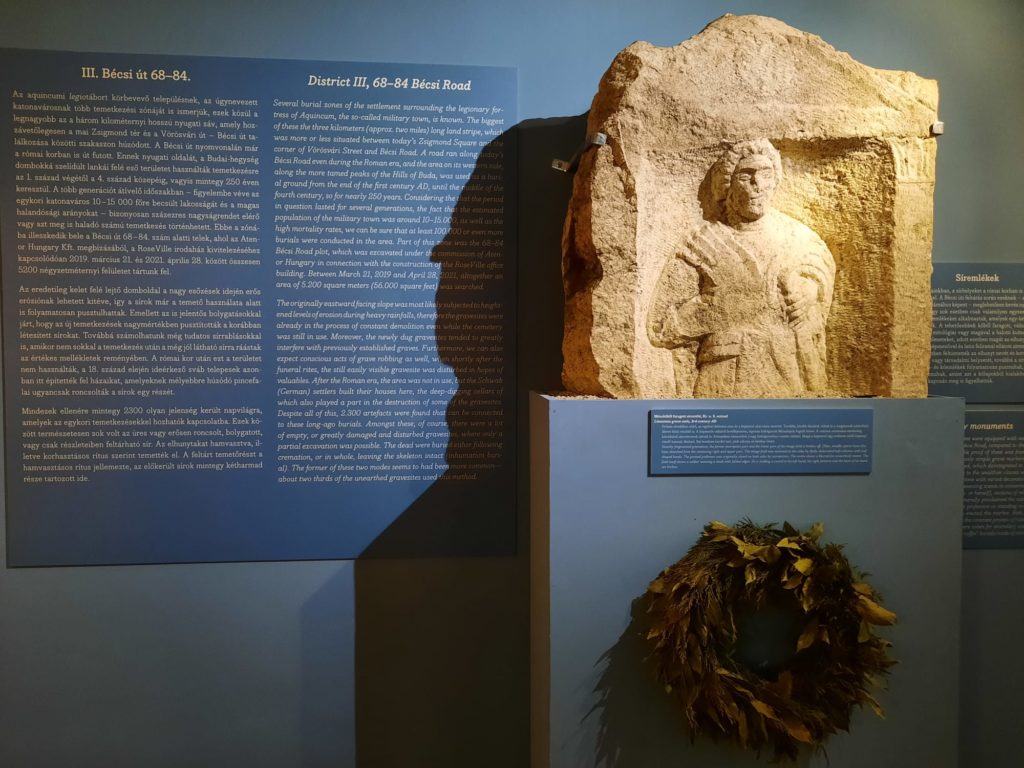
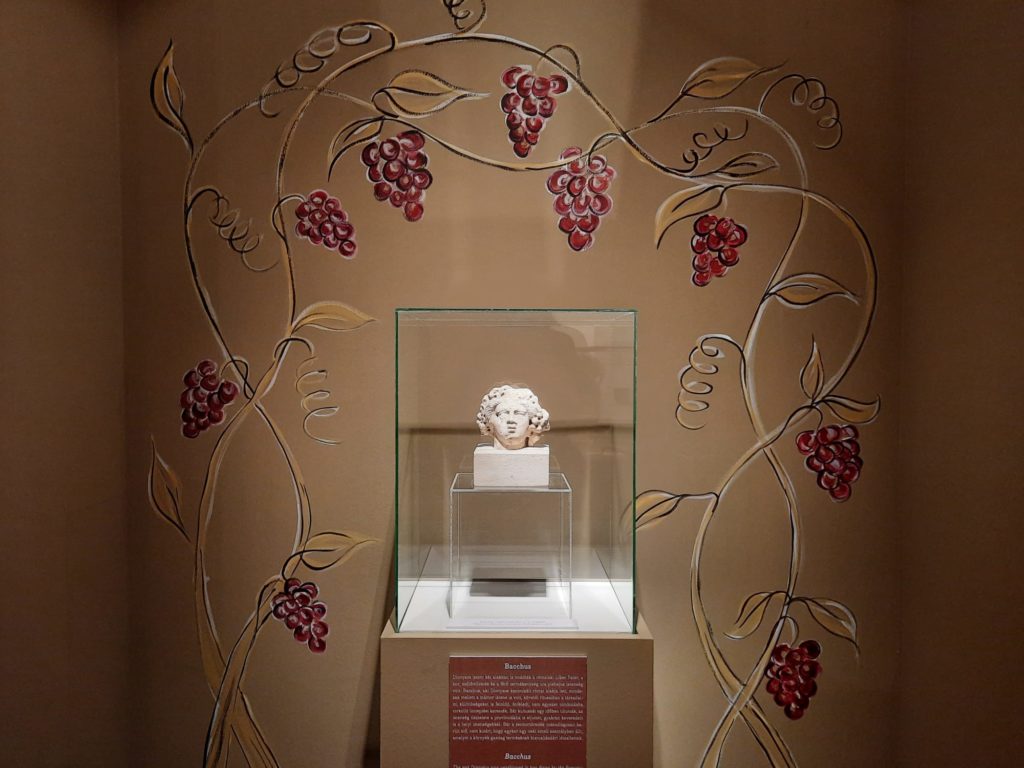
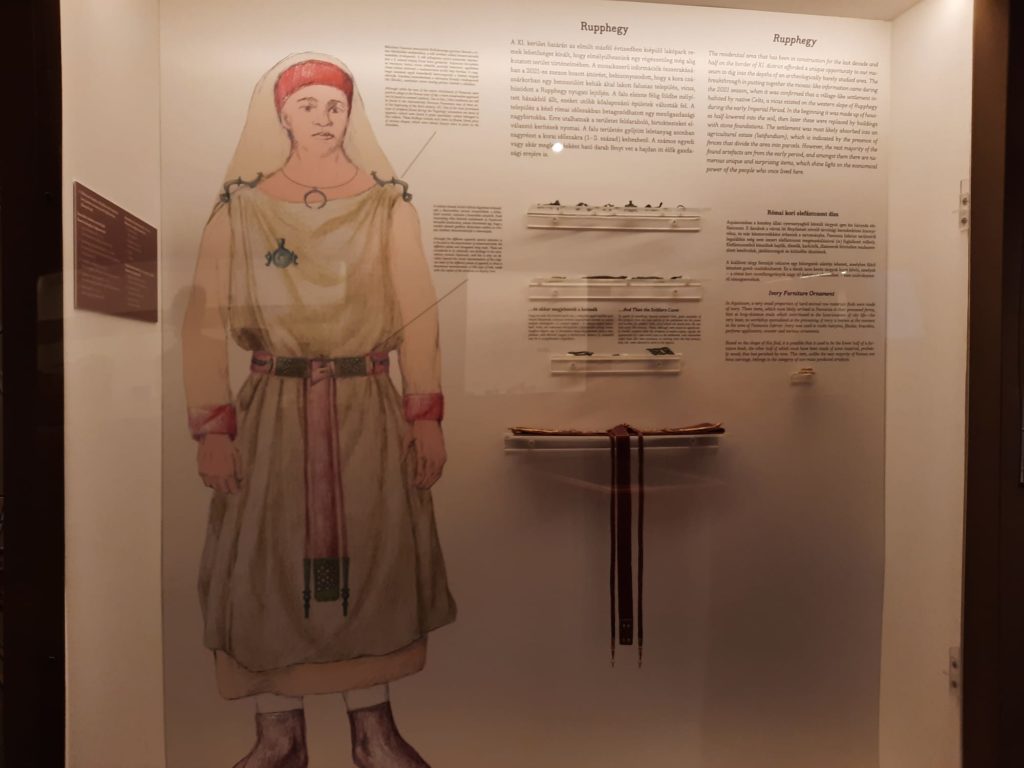
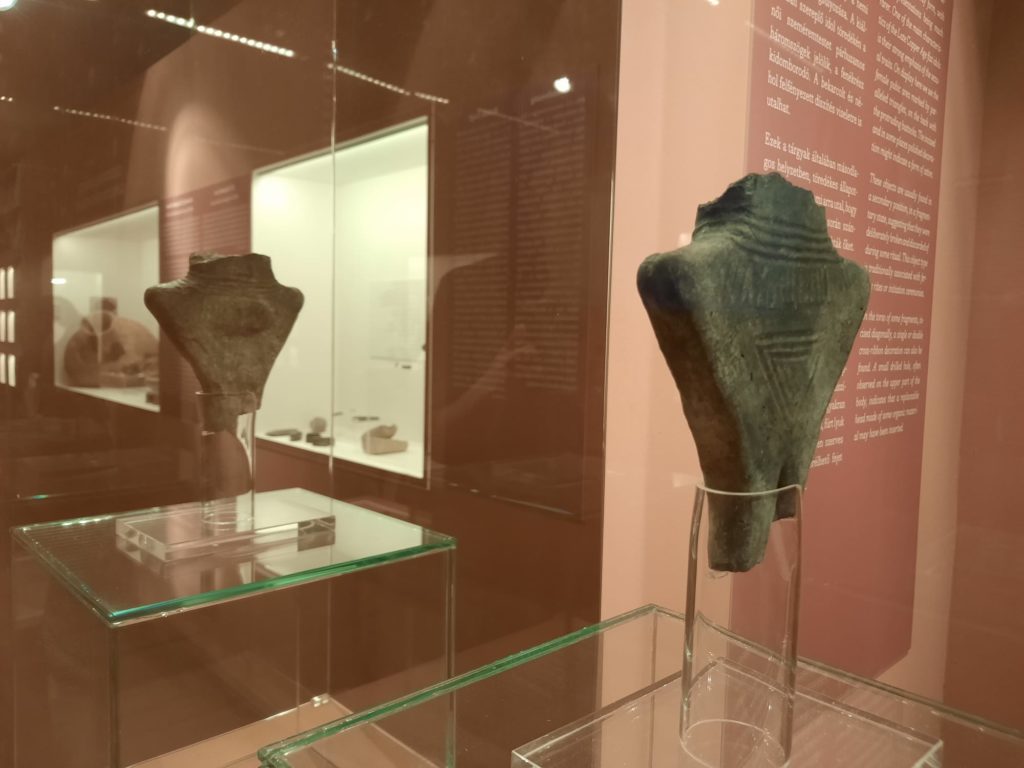
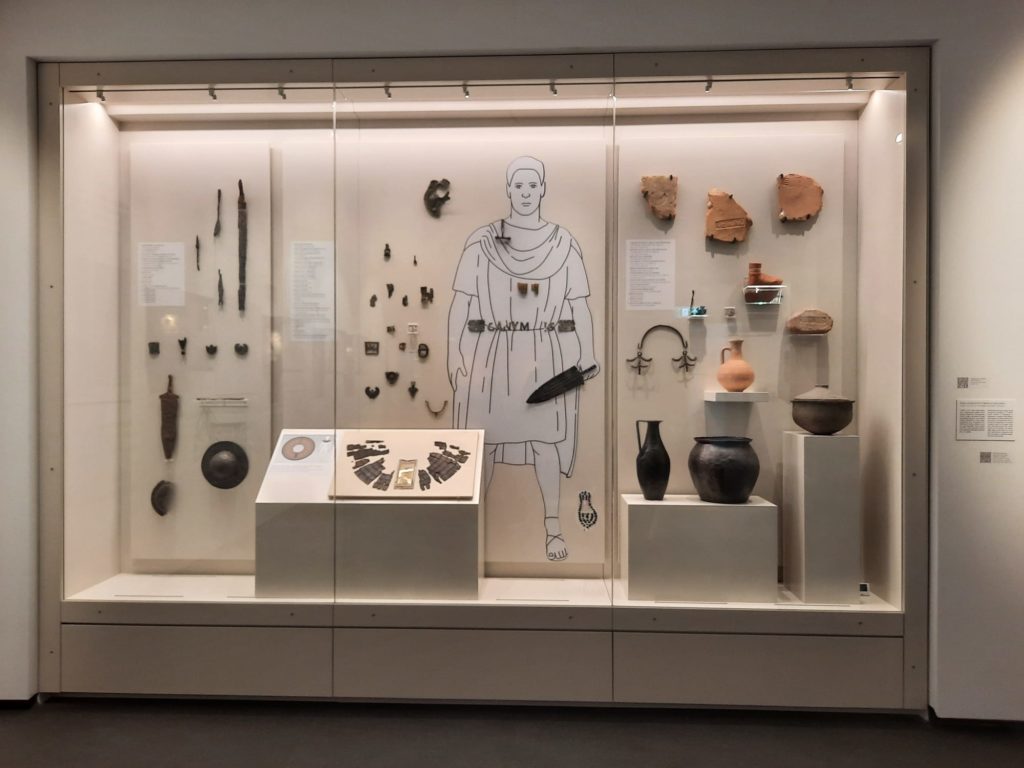
A Short History Of Aquincum
Like many places (most places really) in the Roman Empire, the Romans weren’t the first to settle at Aquincum. In fact, Aquincum started life as Ak-Ink, a Celtic (Eravisci) name meaning ‘Ample Water’. You can see the word ‘aqua’ in Aquincum, too, so clearly the settlement’s position next to the Danube and numerous hot springs has always been its key feature. Most of what we know about the Eravisci comes from Roman/Latin writings, but we do know they enjoyed a good standard of living here.
The Romans took over from the Eravisci in the reign of Vespasian. A calvary unit set up here first in 73 CE, followed by a legion and proper military installation in 89 CE. Aquincum was primarily a military base, part of the limes border defences of the Roman Empire which later included Hadrian’s Wall back in Britannia. In fact, Aquincum also has a connection to Hadrian who was Proconsul of the Pannonia Inferior province, in which Aquincum was located, between 106-108 CE.
However, it’s hard to run a military base long-term without supporting infrastructure. And Aquincum had not one but two nearby civilian settlements. One, immediately outside the base’s walls, was home to families and immediate dependents. The second, the location of the Aquincum museum today, was a little further off and more independent. Eventually the Romans established a second fortress, Contra-Aquincum, in what later became Pest. For various reasons (disease, hostilities, failing Empire) Aquincum was abandoned from the early 5th Century.
Roman ruins were first discovered here in the 18th Century, when a well was dug at Óbuda. Maria Theresa, Queen of Hungary, personally ordered the preservation of the newly unearthed military baths. They’re still there (now under a motorway) but currently closed to visitors. Proper excavations started in Aquincum’s civilian town in the late 19th Century. This was a time of significant interest in the Roman Empire’s borders across Europe and beyond, when industrial expansion also meant development on previously (relatively) untouched land. A museum first opened here in 1894, and visitors today can see about a third of what remains of the settlement.
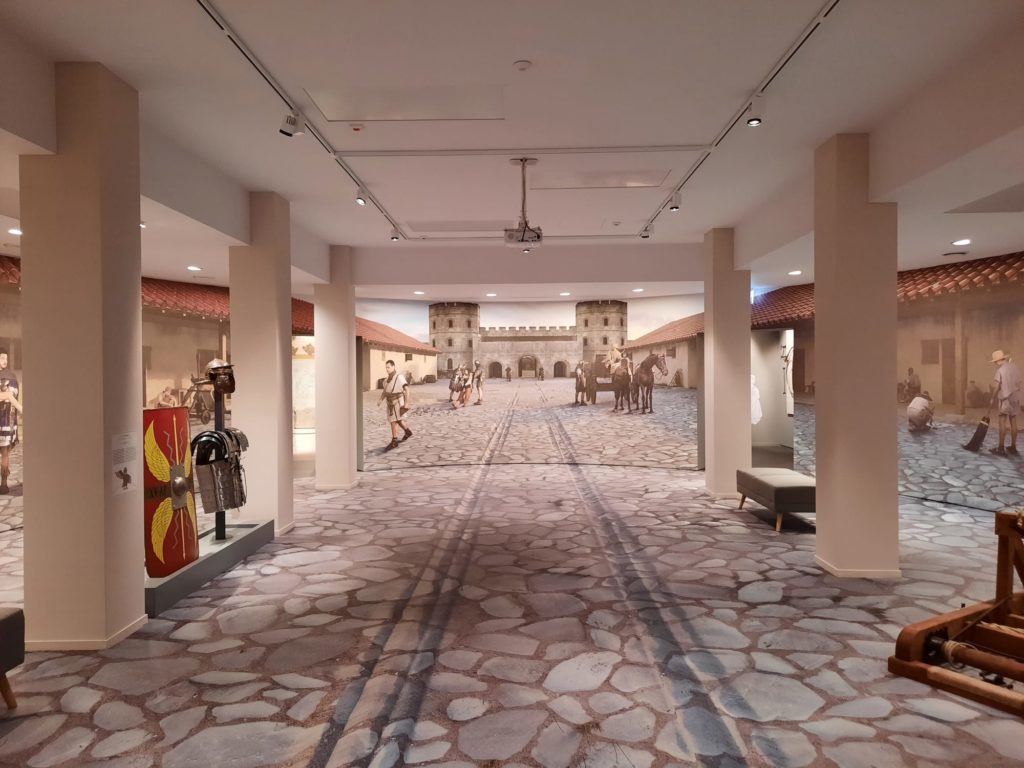
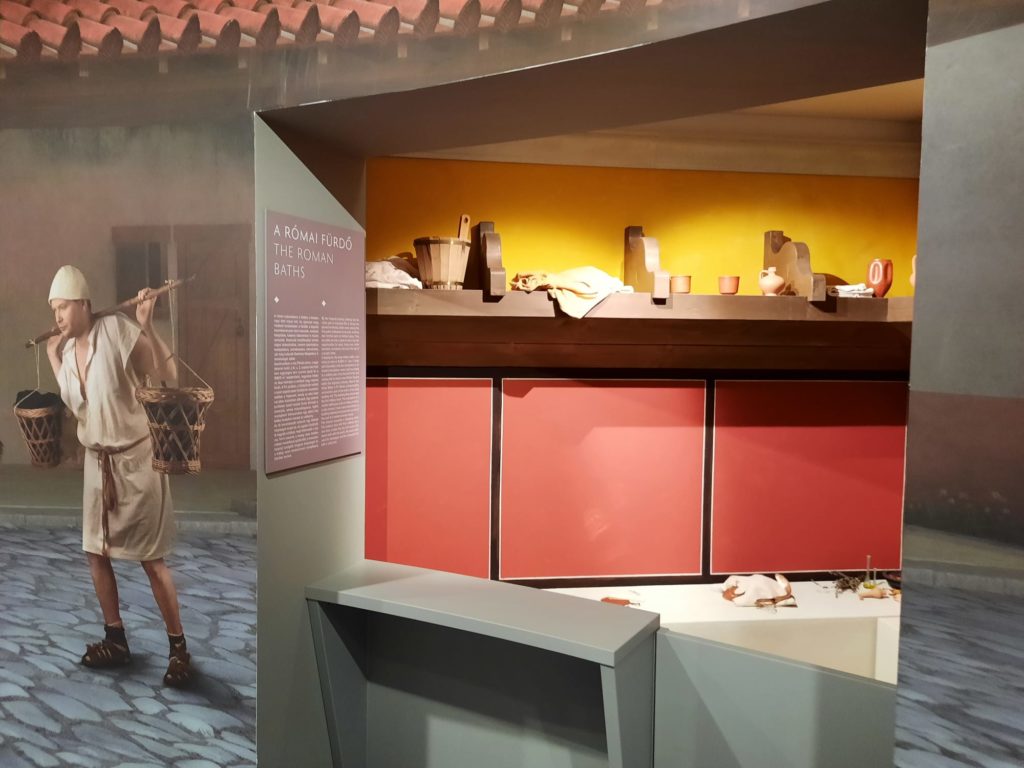

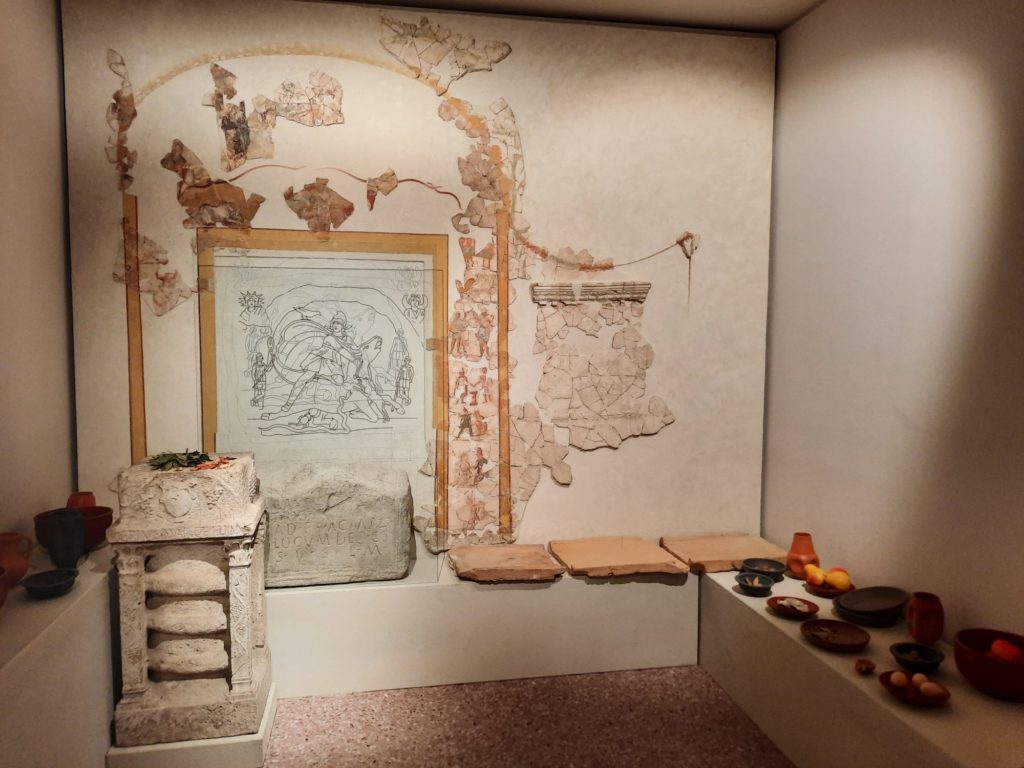
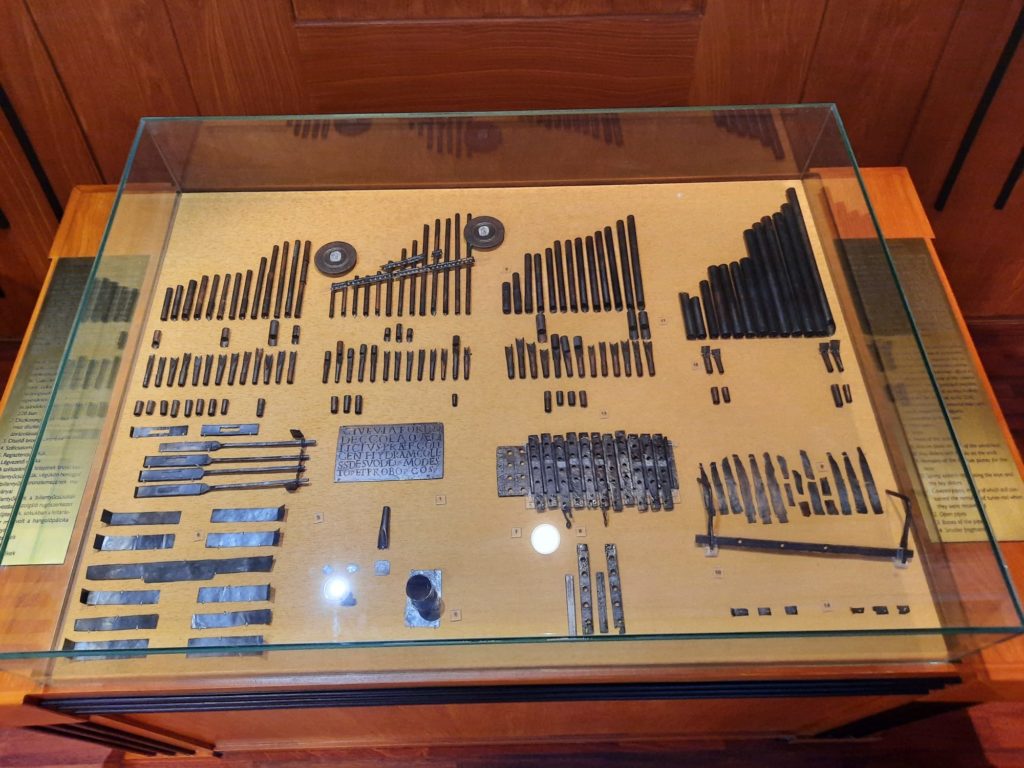

The Museum
I don’t know quite what I expected from the museum at Aquincum, but it certainly wasn’t something quite so extensive. Bearing in mind there is not just this museum, but another one further on in the park, the ruins themselves, a Mithraeum, and a reconstructed Roman house. And sadly nothing but a vending machine to sustain yourself during your visit. But anyway, I digress. I struggled to find much information on the first museum’s history, but I would guess that the building is from the first half of the 20th Century, with a late 20th Century extension. It gives ample exhibition space, in any case.
The displays within Aquincum’s museum are largely thematic. There is an attempt to build up a picture in a logical order. We start with Aquincum’s place in the Roman Empire. We then see various archaeological finds, and explore themes like religion (I particularly loved that the section on curses was separated by a curtain). There are sections showing finds from different locations in the city. And information on those who came before the Romans: the Eravisci and their forebears from deeper in pre-history as well.
Two exhibits stand out in my mind as being particularly unique. The first is down in the museum’s basement. A large circular room has been made to look like the entrance to Aquincum. Recreated rooms like a barracks and bathhouse bring the fort to life and help to situate some of the objects we’ve seen. It’s particularly good for families, but fun for adults too. Upstairs, don’t miss the Roman water organ. A unique find, the completeness of the parts, found in situ, allowed the instrument to be recreated. There’s a video on it upstairs, and a recording you can play downstairs.
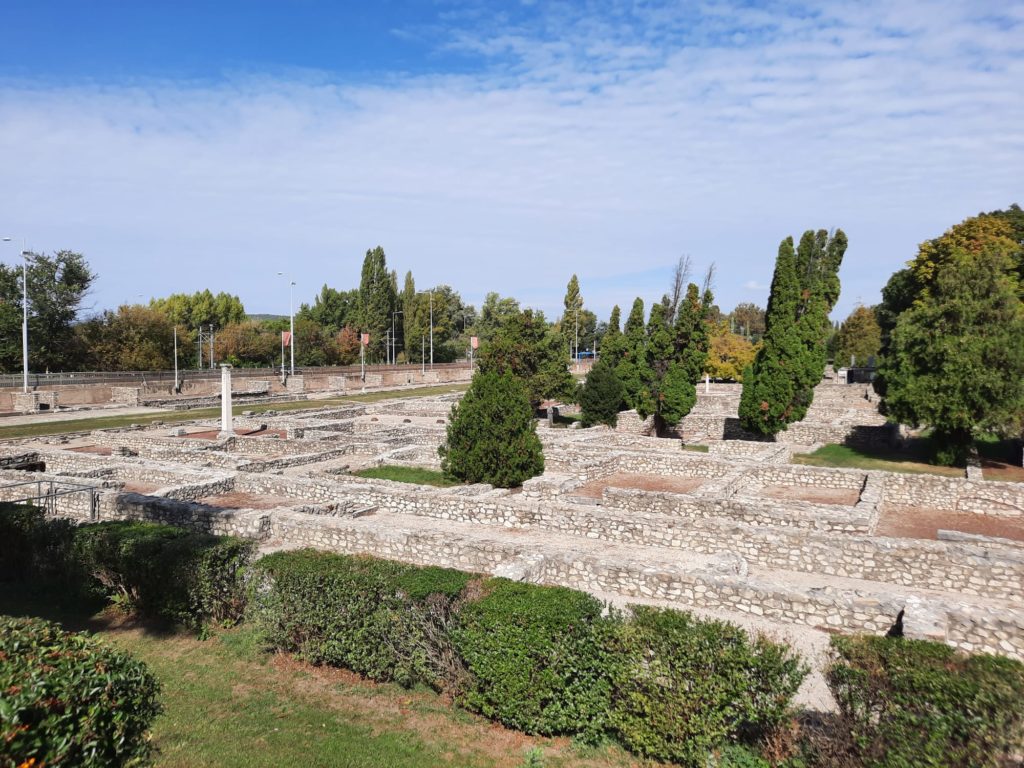

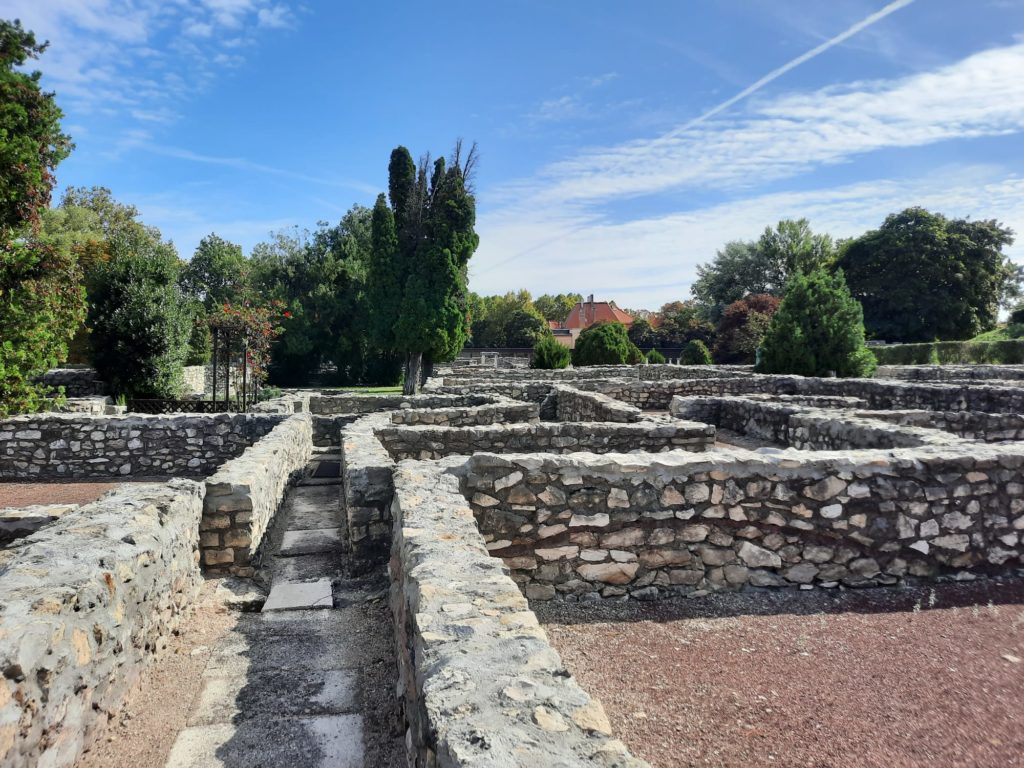

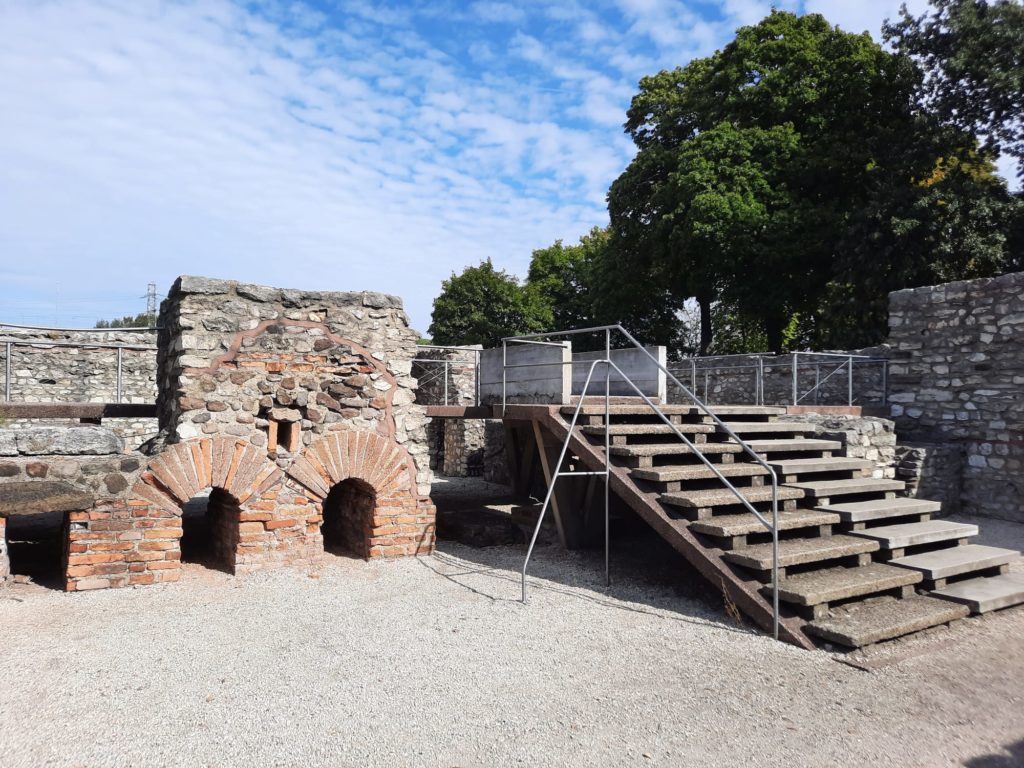

The Archaeological Park
And now to head outside for a look around Aquincum itself. The site is large, despite only representing a percentage of the full Aquincum that was. Visitors will also notice that it has relatively little interpretation. You mostly navigate the streets independently and assume what you’re looking at are shops and homes. A few details are possible to make out. Although in a site of this size, too many details would be overwhelming, so perhaps it’s actually a blessing. Key structures, like the public baths, have separate signage in any case.
One detail I noticed at Aquincum which I found rather interesting is its approach to preservation and restoration. I don’t think this is recent – I think it’s a choice of previous decades – but I noted that the walls have been brought up to a relatively uniform height, with a red line marking out what is Roman vs. what is later. It’s probably not something that archaeologists would do today, but it does give a good sense of navigating a city, and indirectly helps to preserve the Roman stones which would otherwise be exposed to the weather.
Another small detail which I enjoyed were the cut-outs of ‘Romans’ dotted around the park. Having been to the museum already, these figures were familiar to me as the same characters who featured in the basement reconstruction of the military base. You can see a woman above, for instance, who’s fetching water from the well. In the absence of more signage, this is a nice way to bring things to life a bit more.

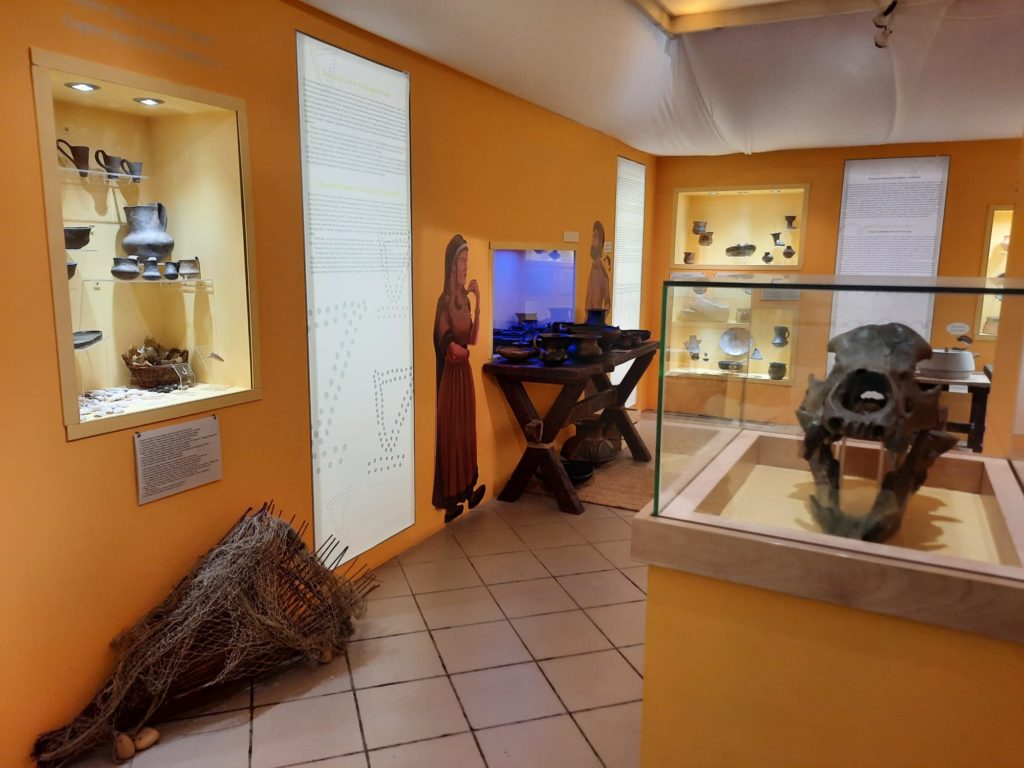
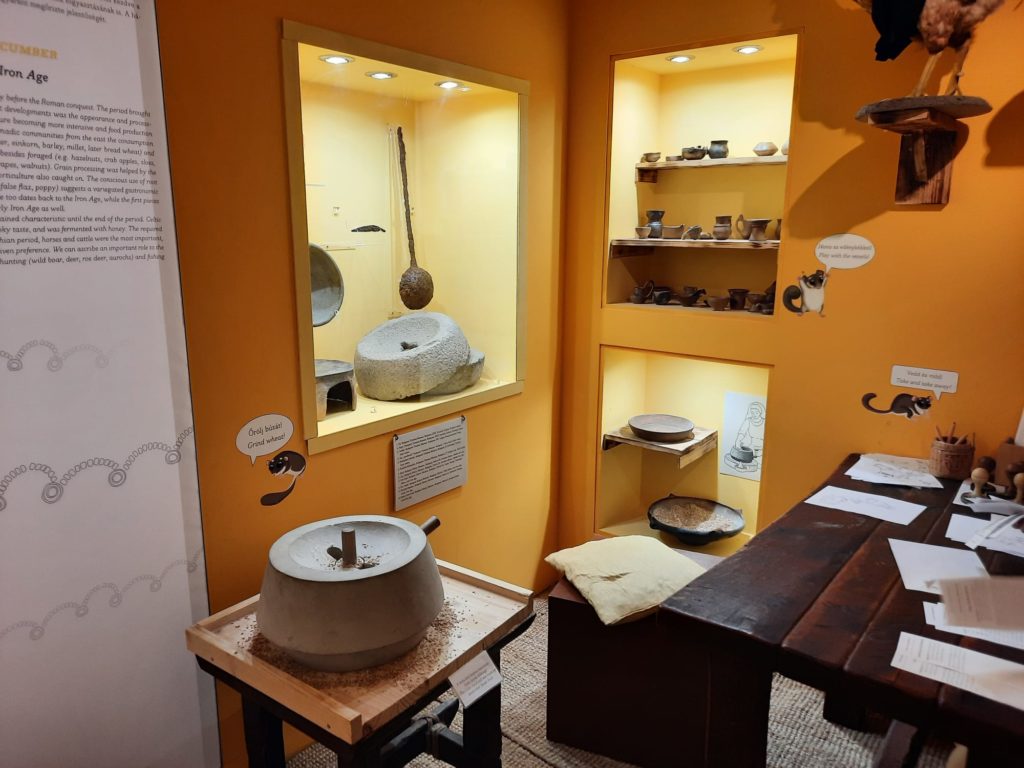
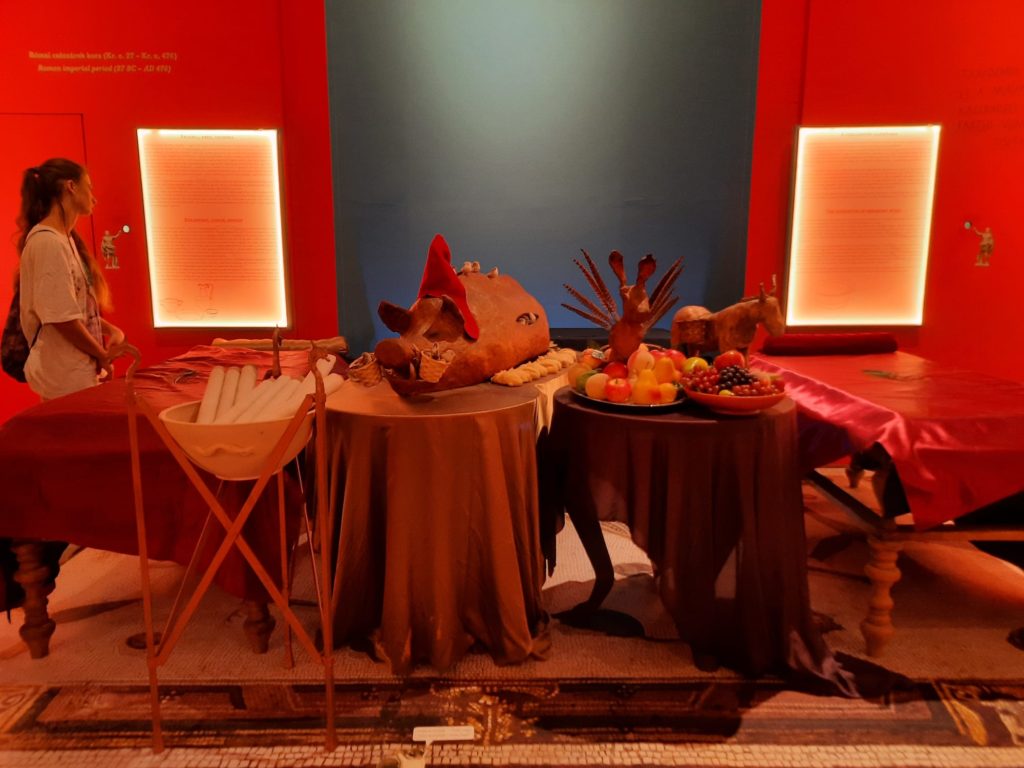
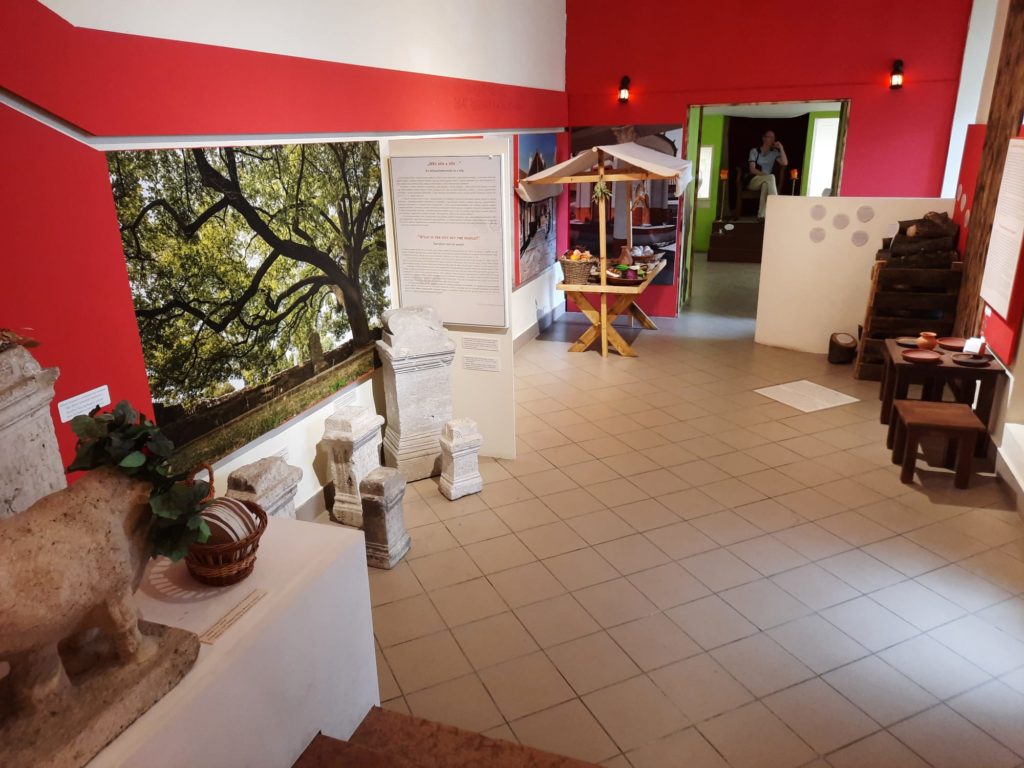
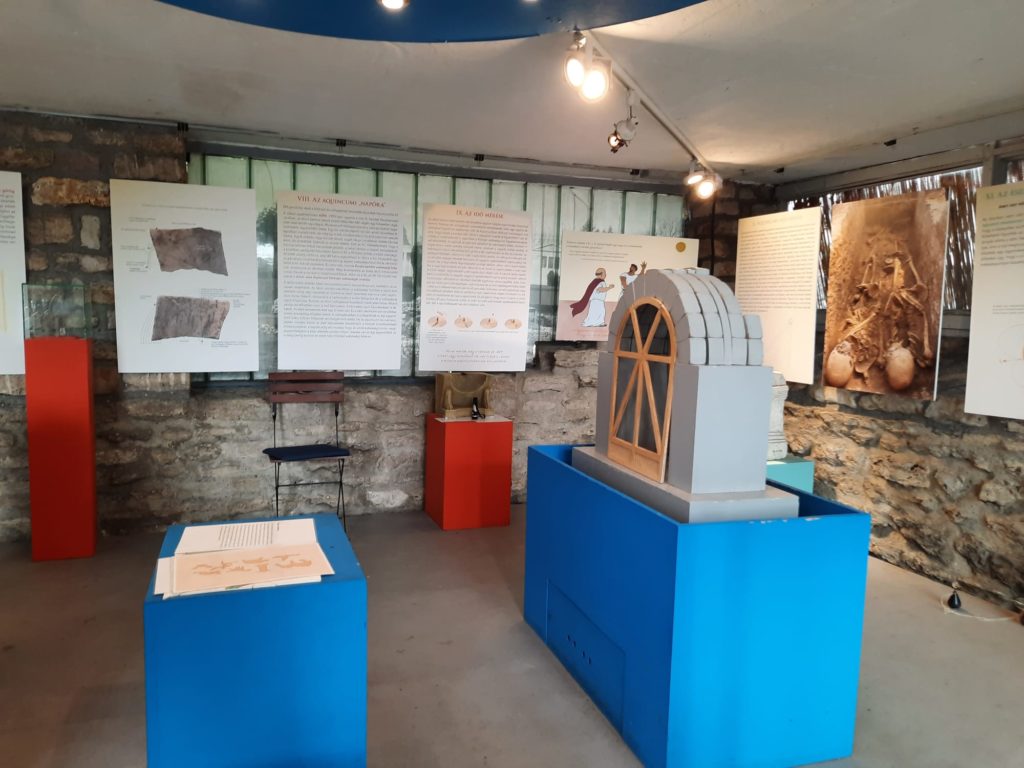
Bonus Museum: An Exhibition On Food History
The classical-style museum in the middle of the archaeological park is actually the original one at Aquincum, dating to 1894. The central part came first, followed by wings added on either side when more space was needed. Today it plays host to temporary exhibitions: we saw one on food history.
Sadly F.E.A.S.T: a Three-Course Belly History finished at the end of October 2023, shortly after my visit. For me it was a definite highlight and a lot of fun. I love an interactive exhibit, and F.E.A.S.T. had them in spades. The title in English is a bit of a stretch: F(eatures) E(xciting) A(limentary) S(ubjects) and T(idbits). But essentially the exhibition looked at food and nourishment over three periods: the paleolithic, Roman and late Avar or Migration Period. It explored the shift to farming, the variety of foods grown and eaten during each period, and even had recipes to take home. I had a great time grinding wheat, guessing which bone belonged to which animal, and reading about the Roman etiquette of farts. I didn’t say it was sophisticated, just that it was fun. Of the two, I know which I would prefer.
The bottom image above shows another interactive exhibit which, with luck, will still be there when you visit. This was a one-roomed affair containing scientific experiments relating to the classical knowledge. The attendant didn’t speak English and we didn’t speak Hungarian, but he was friendly and showed us the principles of the water organ, before we played around with pulleys and building arches. Simple, but again quite fun.
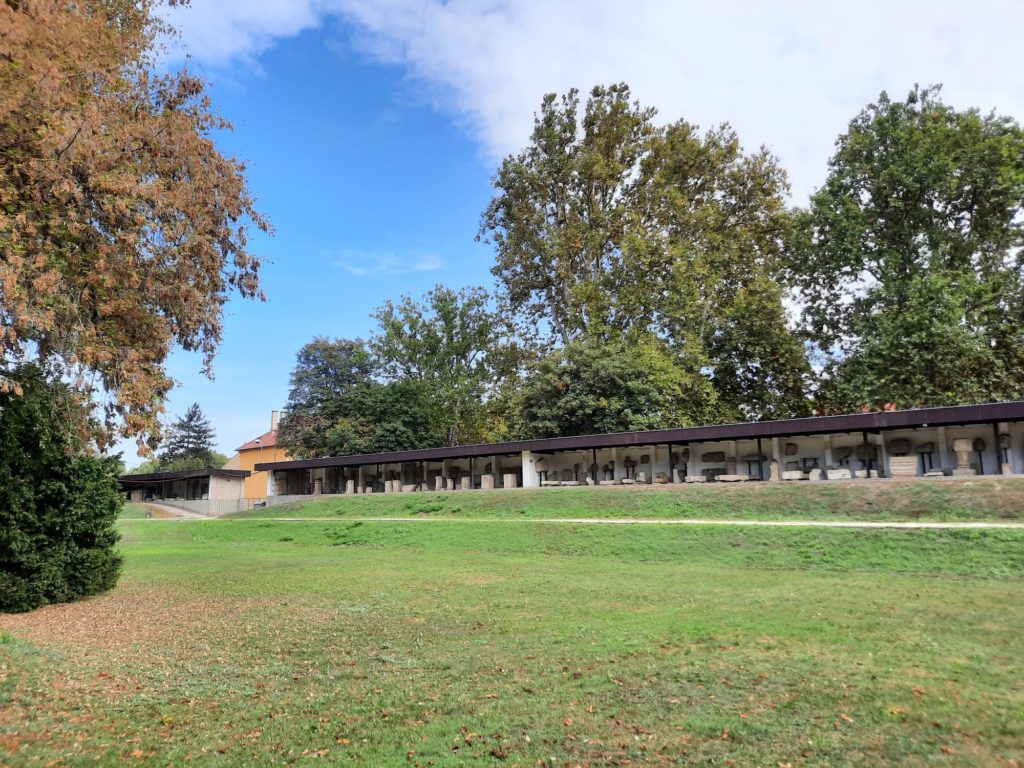

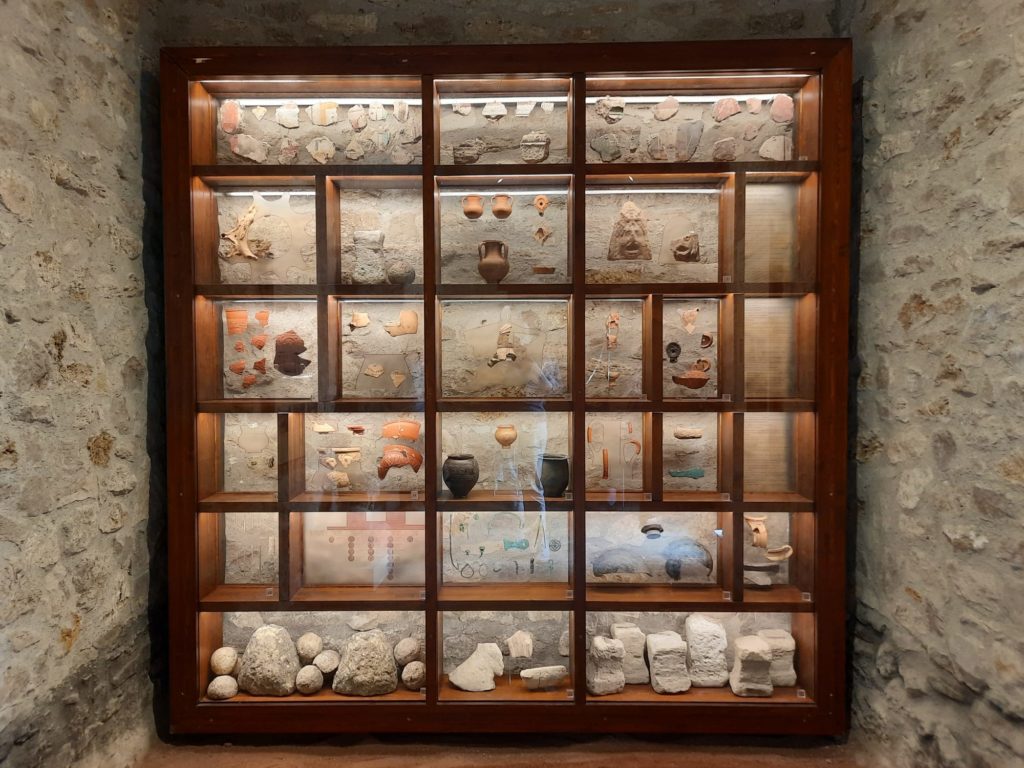
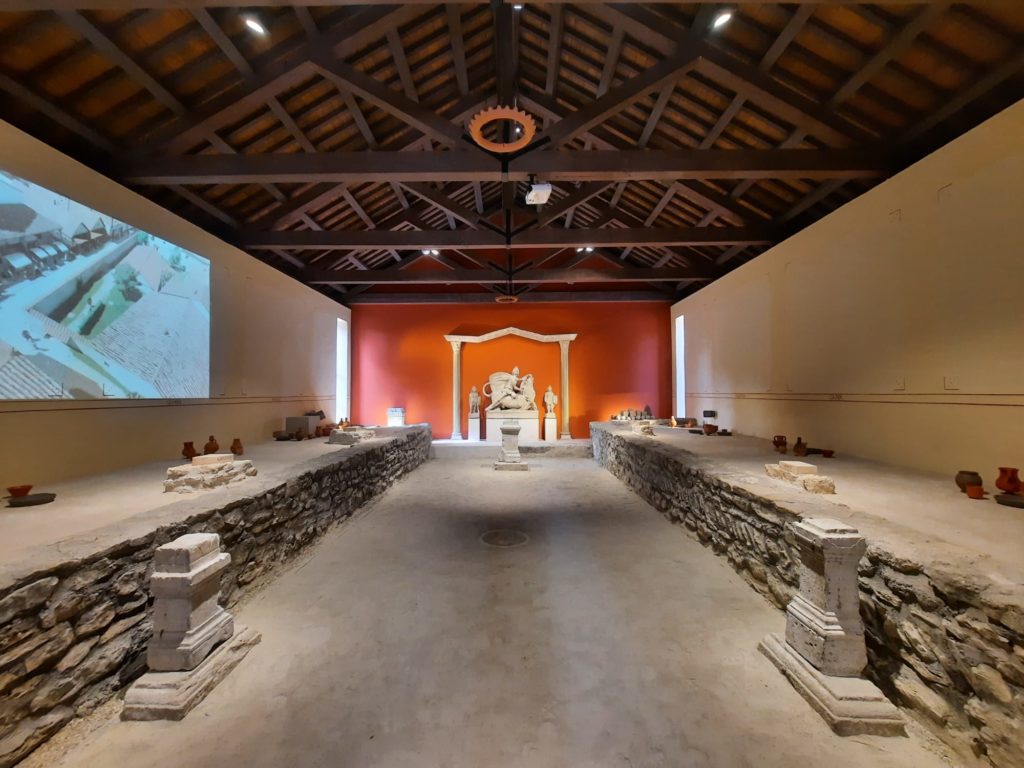


Lapidarium, Mithraeum, Artist’s House
Just a few more sights, now, before we head to the exit and find our bus back to central Budapest. I will firstly mention the lapidarium. A fancy word, but it’s basically where they keep the stones (lapis = stone). Aquincum has a small one near the entrance, and a long one down one side of the park. We had a quick look at the former, and more or less skipped the latter. I love archaeology far more than the next person, but a stone is a stone. An explanation of brick production at one end of the lapidarium is probably only interesting to archaeology geeks such as myself.
More interesting is the Mithraeum. We’ve see one of these, in London. The Cult of Mithras was an Eastern (or Eastern-inspired) religion which swept the Roman Empire. It involved secret rituals, underground temples, and the slaughtering of bulls. Many soldiers were followers, and so Temples of Mithras are common in places like Aquincum (there’s also one on Hadrian’s Wall). Very little remains of the Aquincum Mithraeum. But what does remain is in a clear and informative display, reconstructing the scale and basic layout of the original.
And finally, we saved the House of the Painter for last. This is a reconstructed Roman house, or partially reconstructed at least: it originally had additional rooms and outbuildings. In all the archaeological sites I’ve been to, full reconstructions like this are relatively rare. It gives a completely different view of life in Aquincum: decorated plaster walls rather than bare stone, and so on. It’s relatively simple, so quick to visit, but a nice way to finish things.
Overall, we very much enjoyed our trip to Aquincum and felt it was worth the excursion. It added to our sense of history in Budapest, and was an interesting half-day activity. Well worth considering on your own trip to Hungary’s capital.
Salterton Arts Review’s rating: 4/5
Trending
If you see this after your page is loaded completely, leafletJS files are missing.

